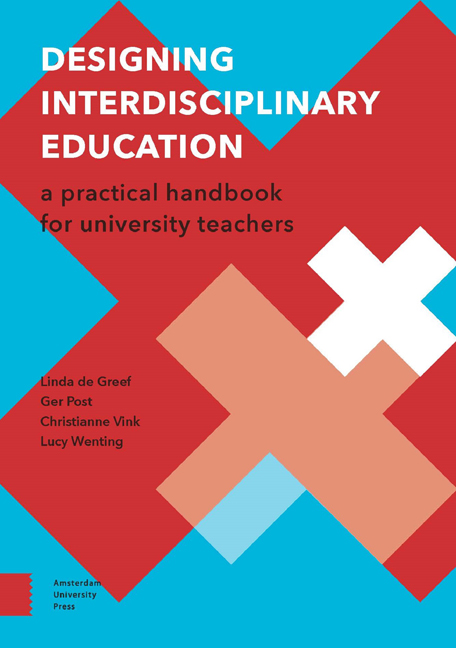Book contents
- Frontmatter
- Contents
- Acknowledgements
- 1 Introduction
- 2 An Overview of the Development Stages
- 3 Unravelling Interdisciplinary Understanding
- 4 Developing the Raw Sketch
- 5 Formulating Interdisciplinary Learning Outcomes
- 6 Embedding Integration in the Programme Design
- 7 Hiring and Engaging Faculty
- 8 Exploring the Teaching Philosophy and Didactic Methods
- 9 Assessment of Interdisciplinary Learning Outcomes
- 10 Interdisciplinary Teaching in Practice
- 11 Programme Assessment and Adjustment
- Appendices
- References
- Colophon
5 - Formulating Interdisciplinary Learning Outcomes
- Frontmatter
- Contents
- Acknowledgements
- 1 Introduction
- 2 An Overview of the Development Stages
- 3 Unravelling Interdisciplinary Understanding
- 4 Developing the Raw Sketch
- 5 Formulating Interdisciplinary Learning Outcomes
- 6 Embedding Integration in the Programme Design
- 7 Hiring and Engaging Faculty
- 8 Exploring the Teaching Philosophy and Didactic Methods
- 9 Assessment of Interdisciplinary Learning Outcomes
- 10 Interdisciplinary Teaching in Practice
- 11 Programme Assessment and Adjustment
- Appendices
- References
- Colophon
Summary
‘We teach a lot that isn't going to matter in a significant way in students’ lives, there's also much we aren't teaching that would be a better return on investment.’
David Perkins
During the design phase of the programme, at some point the question will be raised: what do the students really need to learn? A clear answer to this question would describe the knowledge, skills and attitudes that the student will have upon graduating from the programme. With the raw sketch in mind, this chapter begins by discussing how to formulate clear interdisciplinary programme outcomes, followed by the means by which to translate these outcomes into intended learning outcomes and design at the course level.
Intended learning outcomes at the programme level
The intended outcomes at the programme level are important for the job market and for employers, because these outcomes – unlike a list of module titles – will help employers identify whether a graduate is suitable and qualified for a specific job. Programme outcomes are also valuable for students by providing them with a goal to work towards, clarifying what they can expect from their education and indicating the output standards expected of them. For teachers, the programme outcomes serve as a solid foundation for formulating the intended learning outcomes of the programme's courses. Moreover, the outcomes at the programme level will help to guide the process of curriculum and course development and enable the development team to deal more straightforwardly and rationally with conflicts concerning curriculum content. Programmes without concrete outcomes run the risk of gradual erosion. This can be a significant threat for an interdisciplinary programme, as it often has no fixed boundaries and can easily become an unstructured endeavour without a clear focus. A clear picture of the ideal student can help when formulating learning outcomes. Activity 6, described in the box below, can support this aim.
Activity 6
Picture the ideal graduate and create a persona
The more elaborate the idea of what it means to be the ideal graduate and of how students become such a person, the easier it will be to transfer this idea into programme outcomes.
- Type
- Chapter
- Information
- Designing Interdisciplinary EducationA Practical Handbook for University Teachers, pp. 56 - 75Publisher: Amsterdam University PressPrint publication year: 2017

